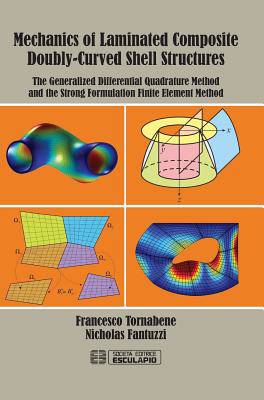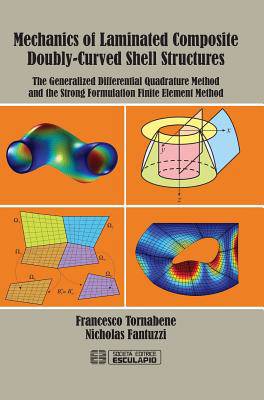
- Afhalen na 1 uur in een winkel met voorraad
- Gratis thuislevering in België vanaf € 30
- Ruim aanbod met 7 miljoen producten
- Afhalen na 1 uur in een winkel met voorraad
- Gratis thuislevering in België vanaf € 30
- Ruim aanbod met 7 miljoen producten
Zoeken
Mechanics of Laminated Composite Doubly-Curved Shell Structures
The Generalized Differential Quadrature Method and the Strong Formulation Finite Element Method
Francesco Tornabene, Nicholas Fantuzzi
Hardcover | Engels
€ 214,95
+ 429 punten
Omschrijving
This manuscript comes from the experience gained over ten years of study and research on shell structures and on the Generalized Differential Quadrature method. The title, Mechanics of Laminated Composite Doubly-Curved Shell Structures, illustrates the theme followed in the present volume. The present study aims to analyze the static and dynamic behavior of moderately thick shells made of composite materials through the application of the Differential Quadrature (DQ) technique. A particular attention is paid, other than fibrous and laminated composites, also to "Functionally Graded Materials" (FGMs). They are non-homogeneous materials, characterized by a continuous variation of the mechanical properties through a particular direction. The GDQ numerical solution is compared, not only with literature results, but also with the ones supplied and obtained through the use of different structural codes based on the Finite Element Method (FEM). Furthermore, an advanced version of GDQ method is also presented. This methodology is termed Strong Formulation Finite Element Method (SFEM) because it employs the strong form of the differential system of equations at the master element level and the mapping technique, proper of FEM. The connectivity between two elements is enforced through compatibility conditions.
Specificaties
Betrokkenen
- Auteur(s):
- Uitgeverij:
Inhoud
- Aantal bladzijden:
- 826
- Taal:
- Engels
Eigenschappen
- Productcode (EAN):
- 9788874886876
- Verschijningsdatum:
- 1/03/2014
- Uitvoering:
- Hardcover
- Formaat:
- Genaaid
- Afmetingen:
- 170 mm x 244 mm
- Gewicht:
- 1501 g

Alleen bij Standaard Boekhandel
+ 429 punten op je klantenkaart van Standaard Boekhandel
Beoordelingen
We publiceren alleen reviews die voldoen aan de voorwaarden voor reviews. Bekijk onze voorwaarden voor reviews.











